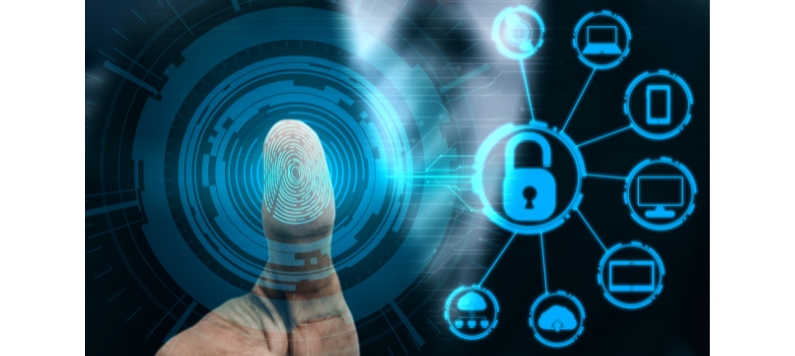A hand-written signature has always been a widespread and acceptable way to sign a document. Signatures are a synonym for expressing agreement and intention, and therefore agreements, contracts, or documents provide the value of legal action. For this reason, the basic characteristics required for a signature are its uniqueness and personal character.
Understanding Biometric Signatures
A biometric signature integrates unique biological characteristics of an individual, such as handwriting dynamics, to authenticate and verify digital documents. Unlike conventional electronic signatures, biometric signatures harness the power of biometric data, making them not only more secure but also uniquely personal. This technology is aligned with the eIDAS regulation, marking it as an advanced form of electronic signature.
How Biometric Signatures Work
The process of creating a biometric signature involves capturing dynamic and behavioral characteristics during the act of signing. This includes:
- The speed and acceleration of the pen,
- The rhythm of writing,
- Pressure points,
- Stroke order, and
- The angle of pen inclination.
These parameters are measured and encrypted, linking the signature irrevocably to the document. This dual layer of protection, technological and natural, ensures a high level of security against forgery and misuse.
Ease of use brings popularity among users
The solution of electronic signature with biometric techniques is practical, easy to use, and thus often the most popular form of e-signing. Clients are still reluctant to use other instruments such as codes, magnetic cards, and tokens. That’s how this advanced e-signature, which is easy to use and resembles traditional paper signing, achieves tremendous success.

Double Biometric Signature Security – Technological and Natural
The biometric signature, according to the categorization defined in the eIDAS regulation, belongs to the category of advanced electronic signature. The ASEE’s goal is to manage biometric signatures and ensure a level of security that minimizes any kind of abuse.
When signing documents using technical means for biometric signing, the system recognizes a series of biometric behavioral parameters associated with spontaneous hand movements during signing. The system gathers all biometric parameters together with additional parameters that create a unique connection between the signed document and the signature encrypted, and encrypted inserts into the document. This ensures double protection:
- inability to bind a signed signature to another document,
- inability to copy recorded biometric data without having encryption keys and associated passwords used for encryption.
In case of dispute, the graphological analysis can detect any attempt to simulate or counterfeit the signature. Even the most abusive forger knows that a series of sign-related movements is completely personal and automated, and is almost impossible to reproduce. Graphological analysis of the electronic biometric signature is since the electronic biometric signature contains significantly more data, much more reliable than the graphical analysis of the standard signature “pencil on paper”.
Solution architecture also protects you and your users from attempted fraud. It is designed and planned to fully respect data protection. The architecture ensures that all processed data are subject to maximum confidentiality and can not be used for other applications other than those for which such data was required or registered.
Forensically recognizable e-signature
Biometric signatures transfer the process of signing and verifying signatures 1: 1 from the paper world to the digital world. The signatories give a handwritten signature and, if necessary, the graphologist “forensically verifies” the pre-recorded manuscript signature in relation to a set of available known signature patterns, either from digital or paper-based sources.
The biometric signature recorded data contains much more than your digitized image. In addition, it requires:
- recorded “behavioral method” data with a handwritten signature, including timing data of writing rhythm (speed and acceleration),
- graphics (slope and slope difference)
- and optional pressure.
These dynamic parameters are unique to each individual and a falsifier can’t reproduce them. That is why such a digitized signature is forensically recognizable and far more reliable than in the case of a signed image.

Determining the authenticity and legal value of the biometric signature
When someone claims “I did not sign it”, a forensic expert can always make a basic manual signature verification using specialized software to achieve acceptable results, in the same way as a paper signature expert.
Likewise, a biometric signature can be automatically verified in real time to determine the authenticity of the profile database filled in during the e-signature process. This ensures that certain transactions are carried out, as well as audits that are stored for use in the event of a dispute, thereby placing the burden of proof on the signatories.
In countries where the legal framework allows, biometric signature is a de facto industry standard for B2C scenarios. For example, POS in the branch office or in a door-to-door mobile situation when both sides meet face to face, which is valid as proof that the signer actually used a pencil or a capacitive pencil. In addition, as reliable data recording and encryption in biometric signatures is absolutely required, biometric signatures recording requires the use of installed native applications that provide a stable real-time processing environment.
By harnessing the power of biometric signatures, organizations can enhance the security and efficiency of their digital transactions while providing a user-friendly experience. This advanced form of e-signature not only meets the demands of today’s digital landscape but also sets a new standard for authenticity and trust in the digital world.
Biometric signature FAQ
Q: Is a biometric signature legally binding?
A: Yes, in jurisdictions that recognize electronic signatures, biometric signatures are considered legally binding, similar to traditional handwritten signatures.
Q: How secure is a biometric signature?
A: Extremely secure. The unique combination of biometric data and encryption provides a level of security that is difficult to breach.
Q: Can biometric signatures be used for all types of documents?
A: Yes, biometric signatures can be applied to a wide range of documents, including contracts, agreements, and forms requiring legal validation.
Q: Are biometric signatures easy to use?
A: Absolutely. The technology is designed for ease of use, allowing individuals to sign documents digitally with the same simplicity and familiarity as signing on paper.





